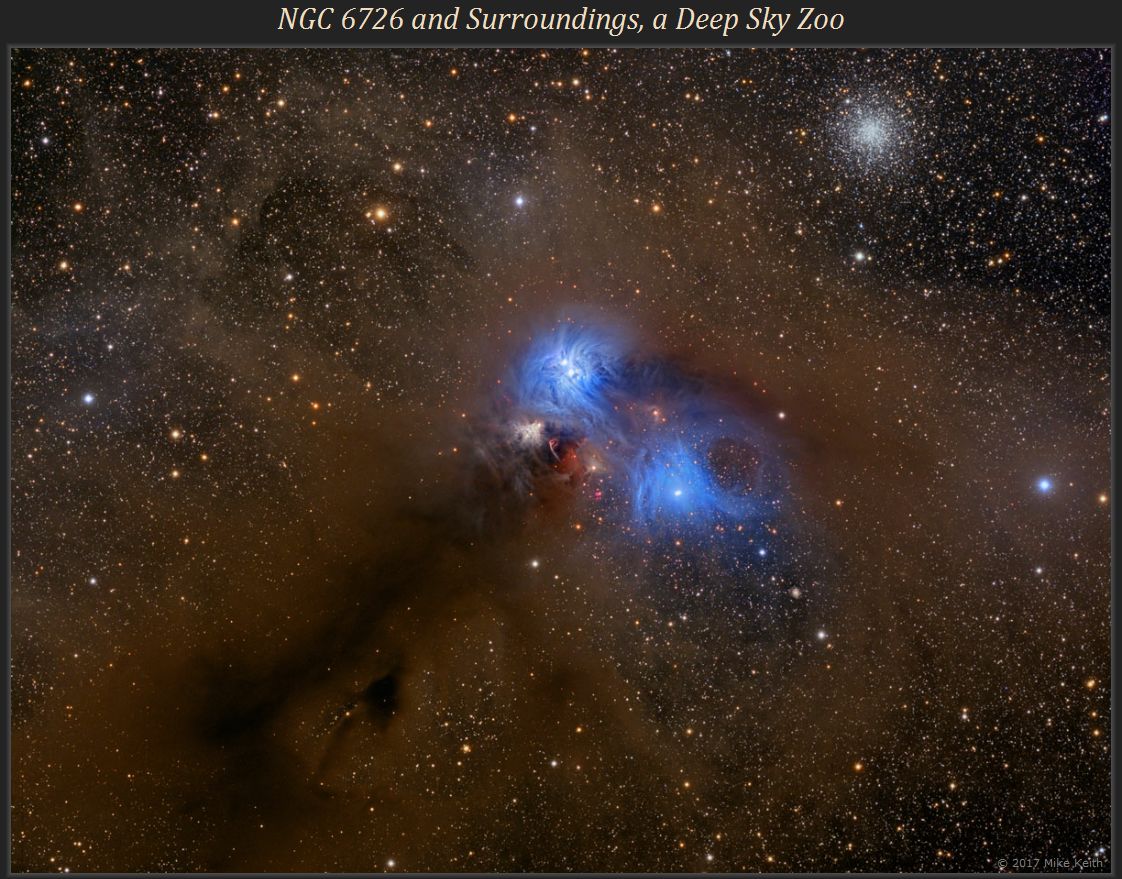
Click here for a higher-resolution image

Click here
for a higher-resolution image
There's a lot going on in this 1.5-square-degree patch of sky that lies primarily in the constellation Corona Australis (though the globular cluster at the upper right is entirely within Sagittarius). We like to call it a "Deep Sky Zoo", because it contains every major type of deep-sky object but one (there aren't, sadly, any planetary nebulae):
Open cluster: the Coronet Cluster (surrounded by nebulosity) at the center of the picture
Globular cluster: NGC 6723 at upper right, a nice cluster about 10' in diameter
Emission nebulae: MHO (Molecular Hydrogen Object) 2007
Reflection nebulae: NGC 6726/27 and IC 4812, very reminiscent of the nebulosity in the Pleiades.
Dark nebulae: numerous dark patches in the brown interstellar dust, such as Dobashi 7595 at lower left
Herbig-Haro objects: HH 99 at upper left, and spectacular tornado-shaped HH 100 in the center
Galaxies: PGC 62667 and LEDA 209747 at lower right, both about 330 million light-years away
The above objects are labeled in the high-resolution image (link above). In addition to the faraway objects, there are three nearby ones: the three labeled trails of asteroids that happened to be passing through the field of view during the four hours of L (luminance) data collection. These asteroids range from magnitude 16 to 19. This is a 16-hour LRGB image captured with a remote-controlled telescope in Chile.